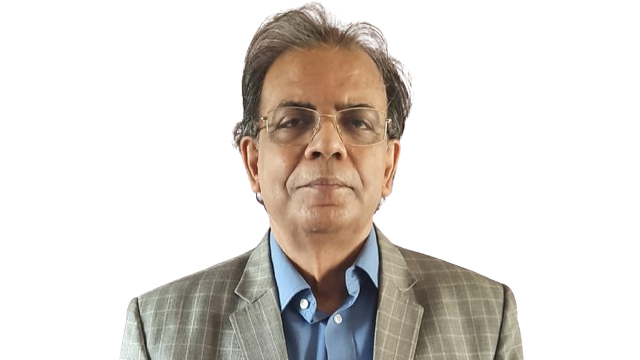
The economic undertone of a Budget is essentially linked to the political context that is confronting the Government. When the issue of economic reforms is discussed people often have major transformative reforms in mind. However a more effective path could be one of step by step progress based on consensus. Grading of reforms in terms of difficulty and political acceptability would be important. It is indeed true that there are distinct signs of macro-economic growth and stability. GDP growth in real terms is expected to be 7% plus this year, inflation is manageable, even if it does not touch 4%, it would still be less than 5%, Current Account Deficit (CAD) has come down to 0.7%, foreign exchange reserves are at $648 billion, which is equivalent to around 11.3 months of imports. Central Government’s expected budget deficit at 5.1% is under control. Government capital expenditure has been picking up steadily over the years, what is interesting is the revival of private capital expenditure in the recent period. This pick up normally happens with a time lag, Private investment in India has always been tethered to Government investment. Further higher revenue collection in terms of GST and direct taxes along with higher dividend payments by RBI and PSUs to Government will not only keep the 5.1% deficit target of Central Government within reach but also could provide a scope for improving on it. Alternatively this can provide the Government some additional elbow room for increasing revenue and capital expenditures in view of the coalition commitments. Given these new commitments and emerging political reality. Issues like alleviation of farmer distress, employment creation, additional expenditure on health and education and extra expenditure for Bihar and Andhra from Central Government funds would be necessary. Along with allocation of expenditure, a mechanism should be in place to monitor the effectiveness of such expenditure.
Economic reforms introduced in the earlier years seem to be working well, some examples of these are GST, Insolvency and Bankruptcy Code (IBC) and RBI’s inflation targeting. Consequently, there is a need to continue with them and improve upon them. Rationalisation of GST, fast track resolution of distressed assets, further measures related to ease of doing business can be expected to be put in place. The factor market reforms like land acquisition and implementation of labour code may be relatively more difficult at this stage. Similarly politically attractive measures like steady escalation of MSP (Minimum Selling Price), continuation of subsidies and distribution of freebies by both Centre and State Governments would be expected to continue without any intervention at the current stage.
Bringing petroleum products under GST is indeed logical; however, this is where the GST council has to agree. Any policy making process involving a multitude of actors will have its own difficulties; currently the basic purpose should be to rationalise the GST rates and bring them down without affecting the States adversely, in view of the tax buoyancy it is quite feasible. Given the improved tax revenue collection and adequate tax buoyancy in both direct taxes and GST, it may be possible to bring down the income tax rates and have a consumption driven initiative. This can be complimentary to the overall investment thrust in the Budget.
The steady capital expenditure growth in areas like infrastructure, defence, railways, emphasis on manufacturing PLI, sustainability, digitisation, MSME, etc., can be expected to continue. The political resistance to these efforts is expected to be minimal. The overall macro stability will permit the Government to continue with its investment thrust on one side and on the other it can introduce its new income tax regime while improving on the deductions. The permissibility of higher deductions in the new tax regime can make it more attractive. Rationalisation of personal tax rate can contribute to both higher consumption and household financial savings. It needs to be highlighted that household savings rate need to go up considerably, at 60.9% (FY 23) of total Gross savings, it is less than the 10 year average of 63.7% (2013-22). Further Net financial savings of the household sector has come down sharply in the recent time period. The budget needs to take this into cognisance and take adequate measures to improve household financial savings. Household sector is the only net lending sector in the economy, both Corporate and Government sectors are net borrowers.
The savings in form of fixed deposits, mutual funds and flows to equity and bond markets need to be encouraged. Can fixed deposits be made tax free is a question worth exploring. It won’t be superfluous to suggest tinkering with capital gains tax or Securities Transaction Tax (STT) can have serious negative effect. Best option for the Budget is to leave it unchanged.
We expect reforms to continue, however it may be prudent to progress in a calibrated manner, the budget which is going to be the harbinger of Government’s policies for 2024 to 2029 will clearly indicate this step by step transition as opposed to a big bang.
Siddhartha Roy is the former Economic Advisor of the Tata Group. Currently he is the CEO of SR Associates an Economic Advisory and Strategic Consultancy enterprise.
Disclaimer: The opinions expressed in this article are the personal opinions of the author. The facts and opinions appearing in the article do not reflect the views of Indiastat and Indiastat does not assume any responsibility or liability for the same.
"Trade Deficit Widening, but Strategic Agreements and Investments Offer Solutions"... Read more